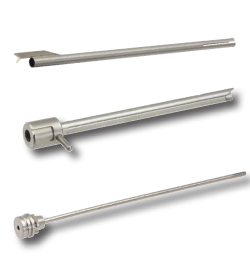Creating Seamless Single Components from Multiple Parts
Custom tube assembly for small diameter stainless steel tubing used in many applications often involve complex manufacturing processes to achieve a single, integrated component.
The choice of assembly method depends on factors such as the specific application requirements, the need for disassembly or reassembly, the materials involved, and cost considerations. In the medical device industry, where precision, hygiene, and reliability are paramount, careful selection and execution of these assembly methods are essential to ensure the safety and functionality of the final product. Additionally, strict quality control and testing procedures are often implemented to verify the integrity of the assembled components.Custom tube drawing and assembly of multiple parts to achieve a single component can be accomplished by various methods such as welding, threading and epoxy, etc.
Welding is a common method for joining stainless steel tubes in medical device assemblies. Laser welding is a technique that can provide precise and controlled joining of stainless steel tubing. By focusing a concentrated laser beam on the joint area, it melts and fuses the tubing with minimal heat-affected zones, ensuring a strong, hermetic seal ideal for applications where precision and cleanliness are essential, such as in medical devices or aerospace components. Threading involves the creation of threads on the ends of stainless steel tubes, allowing them to be screwed together with precision. This method is often used when disassembly or reassembly of components is necessary. Threaded connections can provide a secure and leak-proof joint when properly designed and manufactured. Epoxy bonding is used when a permanent, adhesive-based connection is required between small diameter stainless steel tubes and other components or materials. Epoxy adhesives are chosen for their strength, durability, and resistance to various environmental factors. Proper surface preparation and adhesive selection are critical to ensure a reliable bond. Swaging is a process that reduces the diameter of one tube end to fit inside another tube. It’s often used to create tight and secure connections between small diameter stainless steel tubes, eliminating the need for additional fasteners or adhesives. See our end forming options here
Eagle works to exact customer specifications, as well as the recommendations of our engineers. When we say that Eagle works to exact customer specifications, we mean that we prioritize our clients’ unique needs and preferences at every stage of a project. Our commitment extends to precision engineering, meticulous material selection, quality assurance, adaptability, and a collaborative approach that ensures the end result not only meets but often exceeds our customers’ expectations.



